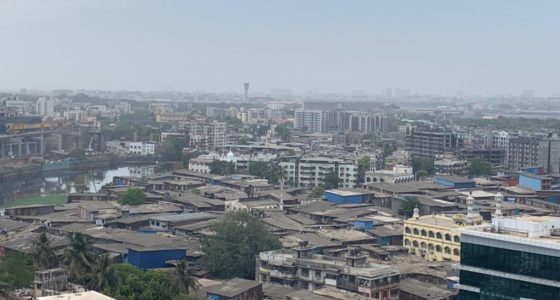-Net Absorption in Q1 2024 at 11.5 MSF across top-8 cities; third highest in five years
– Bengaluru & Mumbai record highest net absorption of 3.6 and 2.5 MSF respectively
– Gross leasing volume crosses 20 MSF, registering a 33% increase y-o-y
– Bengaluru and Mumbai together hold 57% of share in total leasing volumes
The Indian office market continues its positive trajectory, registering a net absorption of 11.5 MillionSquare Feet (MSF) across top 8 cities in Q1-24, according to Cushman & Wakefield’s Q1 office data. This is the third-highest level recorded in the last five years, demonstrating a robust appetite for office space among businesses. Net absorption is a barometer of real demand or expansion of occupied space in the market.
While this quarter’s net absorption was 38% lower than the exceptional Q4-2023, it was a 44% increase over Q1 2023, indicating continued space occupation by businesses. Bengaluru and Mumbai emerged as the leading markets, absorbing 3.6 MSF and 2.5 MSF of space, respectively. They were followed by Hyderabad at 1.6 MSF, Delhi-NCR at 1.5 MSF and Pune at 1.3 MSF, Ahmedabad and Kolkata at 1 MSF, and Chennai at .8 MSF.
According to the report, the Gross Leasing Volume (GLV) also remained robust at over 20 MSF, a 20% decrease q-o-q but a steep rise of 33% on y-o-y basis. Gross leasing volume, which factors in all leasing activity in the market, including renewal of contracted term by corporates, is an indication of overall market activity. This quarter’s figures signify a resilient market with sustained interest in office space.
Nearly a third of the entire India GLV was recorded in just one city, Bengaluru (6.7 MSF), followed by Mumbai (4.8 MSF) with a share of one-quarter. The two cities combined had a share of over 57% in total leasing volumes for the first quarter. A significant contribution to Bengaluru’s healthy leasing volume was 4.8 MSF of fresh leasing activity, and the city accounted for 33% of total fresh space leasing across the top-8 markets. The city also received close to 2.0 MSF of pre-commitments during Q1-24, thereby making it the largest contributor amongst all.
In line with the trend seen in recent past, fresh leasing continues to dominate GLV with 72% share, with pre-commitments and term renewals taking-up the balance 28% in GLV.
Among the sectors, IT-BPM and Engineering & Manufacturing sectors emerged as the major drivers of demand, contributing over 45% to the GLV. The BFSI and Flex Space leasing followed with ~17% and ~11% shares, respectively.
Global Capability Centers (GCCs) took-up close to 4.5 MSF (~22% share in GLV) of office space in Q1, further consolidating the belief that this sector is having a positive influence on office market of India.
The first quarter also witnessed close to 13 MSF of new supply, continuing the momentum of healthy supply from previous quarters. The cities that saw the biggest supply additions were Hyderabad (2.9 MSF), Bengaluru (2.9 MSF) and Delhi-NCR (2.8 MSF). These three, together accountedfor over 67% of total supply in top-8 cities. The new supply, coupled with strong absorption, led to a slight decline in the national vacancy rate to 18.1%. Notably, Mumbai’s supply-constrained market witnessed the sharpest vacancy rate drop by 1.22% points to ~17%.
Rents across most cities exhibited a slight upward trend, reflecting the positive market sentiment and rising demand.
Commenting on the Q1 numbers, Anshul Jain, Chief Executive, India & Southeast Asia and Head of Asia Pacific Tenant Representation said, “The Indian office market is experiencing a robust momentum. We haven’t witnessed 20 MSF of leasing being recorded for two consecutive quarters in recent history. This strong performance may signal a shift and has the potential to become the new standard for the Indian market. The strong leasing, coupled with net absorption of 11.5 MSF– the third highest in the past five years (the previous being in Q4 2023 and Q2 2019) – signifies a surge in tenant interest for office space. As witnessed in the previous quarters, the impressive surge in office demand is primarily driven by fresh leasing. We are confident that a balanced supply pipeline and continued tenant demand will propel further growth in the Indian office market.”
Adding on to this, Veera Babu, Managing Director, Tenant Representation, India said, ” The tightness in vacancy rates, particularly in key markets like Bengaluru, Pune, and Mumbai, is noteworthy. This trend persists despite new supply additions in most cities, indicating a strong and growing demand for office space. This could push occupiers to act proactively by pre-committing in the upcoming quarters, ensuring they secure the right space for their needs. Overall, the outlook for the office sector remains positive for the year ahead.”
Also Read: Office leasing surges by 35%









